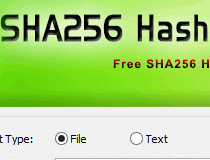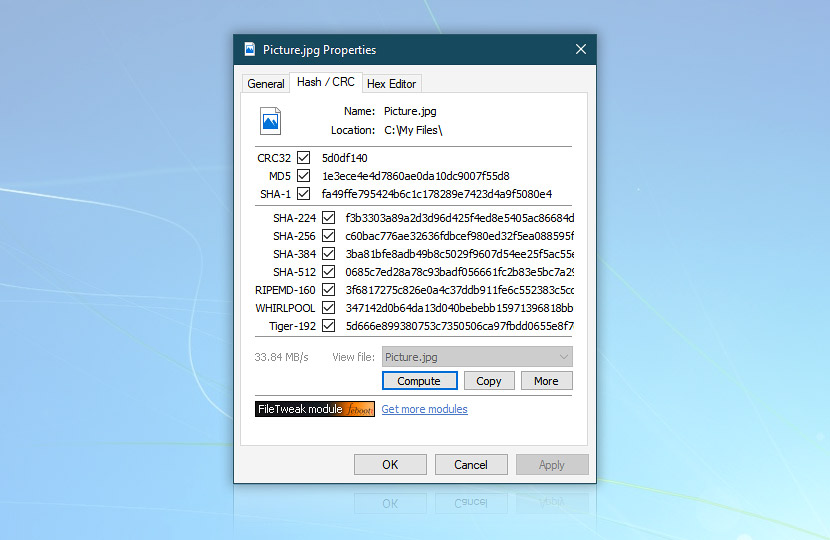

How much wood would a woodchuck chuck if a woodchuck would chuck wood! = a69afba0381a03cef8f846c0447c3cec.How much wood would a woodchuck chuck if a woodchuck could chuck wood! = 7dc1c26de116a3be93f711b473275635.If the method is good, even altering one character, or adding or removing one character, should result in an MD5 checksum that is totally different: Let's have a look at how good the hash algorithm is today.
Hash calculator sha256 windows#
HashMyFiles can also be launched from the context menu of Windows Explorer, and display the MD5/SHA1 hashes of. The hash algorithm used is the default, SHA256. You can easily copy the MD5/SHA1 hashes list into the clipboard, or save them into text/html/xml file. Example 1: Compute the hash value for a file This example uses the Get-FileHash cmdlet to compute the hash value for the /etc/apt/sources.list file.
Hash calculator sha256 generator#
Take a look at this statement to get an understanding of how an MD5 generator works: "How much wood would a woodchuck chuck if a woodchuck could chuck wood?"ĥ806c022c8a3c9be892bfedaae955e83 is the MD5 hash. HashMyFiles is small utility that allows you to calculate the MD5 and SHA1 hashes of one or more files in your system. It is the successor of MD4, a previous interpretation. The value returned by a hash function called hash digest, hash value, hash code, hash sum, checksum, or simply 'hash.' Hash functions are primarily used to generate fixed-length output data that acts as a shortened reference to the original data. The acronym "MD" stands for "Message Digest" and it was defined in RFC 1321. A hash function is any algorithm that maps data of a variable length to data of a fixed length. However, because it is a one-way transaction, reversing an MD5 hash to recover the original text is very hard. Calculate SHA256 Hashes cross-browser testing tools Worlds simplest online SHA256 checksum calculator for web developers and programmers.

It's nothing more than a fingerprint of the input. Users may compare a hash of the source file with a freshly formed hash of the destination file to ensure that it is intact and unaltered because the MD5 hash method always generates the same result for the same provided input.Īn MD5 hash isn't the same as encryption. MD5 hashes are also used to guarantee that files are not corrupted. This application makes encoding an MD5 hash from a basic string of up to 256 characters straightforward and painless.

When storing passwords, credit card numbers, or other sensitive data in databases like MySQL, MD5 hashes are typically utilized with smaller strings. The MD5 method will always provide the same 128-bit hash value when encoding the same string. A 128-bit fingerprint is generated by encoding a string of arbitrary length into an MD5 hash.


 0 kommentar(er)
0 kommentar(er)
